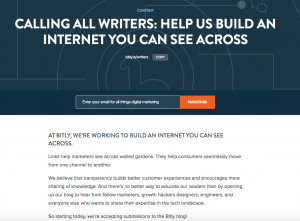It can be argued that 2020 was the worst. In fact, I somehow agree with that sentiment. However, we can’t deny that the world hasn’t stopped and the future looks promising. Indeed, the data shows that it is spinning even faster than before, which can actually be a long-lasting blessing.
The numbers indicate that online commerce experienced a 10-year growth in a period of only 90 days. You read that right.
In fact, eCommerce has become so important that the United Nations Conference on Trade and Development (UNCTAD) has shown great interest in the digital transformation, saying that regions who fail to harness the potential of eCommerce from now on risk falling behind.
But, what does that mean to a digital marketing or SEO agency?
Well. Here are 5 trends they should act on going forward
1 Ecommerce Sales Are At An All-time High
Due to the record online competition that was fueled by eCommerce during the pandemic, Digital agencies saw eCommerce sales soar to an all-time high with a massive flood of small stores and startups gobbling up big chunks of audiences from Big Retail.
Legacy wholesalers felt the competition boogeyman breathing on their necks. Moreover, they were astounded to discover that the monster was nothing more than a huge mass of new brick-and-mortar businesses who, in order to survive, jumped into the online world and ate away a huge chunk of their traditional audience.
Nonetheless, competition turned out to be a blessing. Close to 150 million new shoppers came online as the pandemic raged, and it is said that online shopping jumped 10 years into the future in terms of net trading.
One of the most important lessons learned was that brands that didn’t take a holistic or “omnichannel” approach, were the ones who lagged behind. Retailers went right where their audiences were. Search engines, social media, mobile use, streaming services, and even videogames are now part of the digital marketing ecosystem by using product and user data to find out the way to approach customers without interrupting their online experience.
“The brands who do a better job of making it easy for people to buy their first product will probably be the ones that win out over the ones that have very intricate beautiful stores, but no one knows how to shop on them.”
Loren Padelford, General Manager at Shopify Plus
2 The Democratization Of The Market
Get this into your heads: digital marketers have no real power over the market. The future of retail will always be shaped and reshaped by new consumers.
There are experts saying that once the pandemic is over, consumers will resume their old purchasing habits. However, 48% of online shoppers have expressed that they intend to continue shopping online. This means businesses will have to offer exactly what they demand.
But there is a problem. Big companies are having trouble keeping up with the innovations that small and decentralized small businesses and startups have brought to the table. Many mom-and-pop shops have turned the in-person shopping ritual into virtual experiences, and have made it extremely easy to check out, drastically reducing shopping cart abandonment rates and increasing conversions. This has made retail stores lose much of their luster as they traditionally tend to implement cookie-cutter strategies.
This does not mean that big players are doomed to fail. Quite the contrary. Many of them quickly learned the lesson and are now leading the charge.
For example, they noticed that one of the main challenges of eCommerce stores was shipping costs and return rates. A high return rate could be devastating for a small business. To solve this, there have been huge investments in R&D, especially in 3D modeling and augmented reality. They are now being applied to the shopping experience, allowing customers to actually try clothes on or see how a piece of furniture would look like in their living room before even making the purchase. This will reduce the chances of something being returned because it is the wrong size, model, or color, giving big retail a small respite, for now.
3 Shipping Is No Longer An “Extra”
One of the key factors in the eCommerce equation is fulfillment. Nowadays, people do not see shipping as a service. For more than 64% of consumers, it should be free. This has reshaped how businesses approach the consumer journey.
“One of the worst things you can do is have just a huge delta between customer expectation and experience.”
David Wagoner, cofounder P3 Media
At first, many businesses were turning their stores into fulfillment centers with automated inventory management and a streamlined return process. However, real estate developers all over the country have been frantically building and repurposing massive warehousing spaces into fulfillment centers to help eCommerce businesses process their orders and win what is now called the last-mile race.
In 2020, many businesses saw the need to take their services closer to their customers. Some offered curb pickup options, which was very convenient as customers felt they were saving on shipping costs. However, this was quickly challenged by businesses that offered free shipping.
We all know that shipping is never free, but it has to be factored in in the final price. But how do you lower shipping costs? Through the use of strategically located fulfillment centers.
The demand for warehousing space has grown so much that industrial real estate developers are ready to pay the higher price tag that comes with developing inner-city square footage. That’s the reason shipping costs are going down and more and more eCommerce stores are willing to offer free shipping or even same-day shipping.
4 Branding Is More Important Than Ever
Marketplace dominance has made branding more challenging, yet more prominent.
More than half of internet transactions happen in unbranded environments such as generic product searches. You might be tempted to think that branding then has become secondary or even useless. However, competition has made unbranded searches an unwinnable scenario, and more targeted keywords have a lot more conversion potential.
However, the data shows that branding is today more important than ever if you really want to attract traffic to your website. Website design is no longer about creating an efficient transactional site for your products. Is about creating a destination for buyers.
“Branding is super important for our business. It’s important to have a vision that clients and customers see when they visit our properties online.”
Dan Kogan, Founder 1Digital Agency
The best way to achieve this is through clever social media campaigns, effective UX-centered designs, and personalized services. Many businesses are positioning themselves as exclusive carriers of certain products or personalizing certain products to include their brand in them. There are many ways to do this; white labeling, exclusive deals, influencer takeovers on Instagram. The hardest part is finding the right channel and applying tailored marketing strategies by partnering with an SEO agency.
This takes us to:
5 Retention Now Beats Acquisition
Acquisition costs spiked in 2020. The competition for ad placement both in search engines and social media got so fierce that it drove bidding costs to prohibitively high levels.
Now the magic word is “retention”. Most merchants and online businesses are refocusing their efforts to optimize their conversion funnel towards generating customer loyalty. Moreover, brands are finding really imaginative ways to reward their most loyal buyers.
The subscription model is one big example of this phenomenon. Instead of having a one-and-done transaction with a customer, an increasing number of businesses and industries are shifting towards a new sales model. They now seek to add value in the form of subscriptions that transform their users into subscribers.
And this model does not seem to be limited to traditional industries like magazines, newspapers, and fitness centers. Now we see it everywhere. Bakeries and breweries, car repair shops and car wash businesses, candy stores, and movie theaters.
The best part is that customers seem to love the idea. The idea of having a constant supply of your favorite products and services is extremely attractive. For businesses, it reduces costs associated with risk management as they now have a constant stream of revenue. It’s a win-win situation that reduces acquisition costs and drastically increases retention.
Conclusion
These 5 new trends have been real game-changers. At first, there was a lot of fear as businesses were forced to close doors and adapt to new rules. But soon enough, our collective will helped us find new ways to serve our customers.
And we have to keep adapting: third-party cookies are apparently scheduled for termination, meaning that email addresses are back as the best way to stay in touch with your audience and deliver your message right to their inbox.
The era of customers chasing after products is drawing to a close. They now have the power to dictate where the markets should go, and businesses can’t escape their bidding.
“I think it comes down to: where is your customer, and where are they inspired – and then you deliver the message there.”
Margo Hayes, Principal of Digital Strategy, TSG.
Digital & Social Articles on Business 2 Community
(142)






